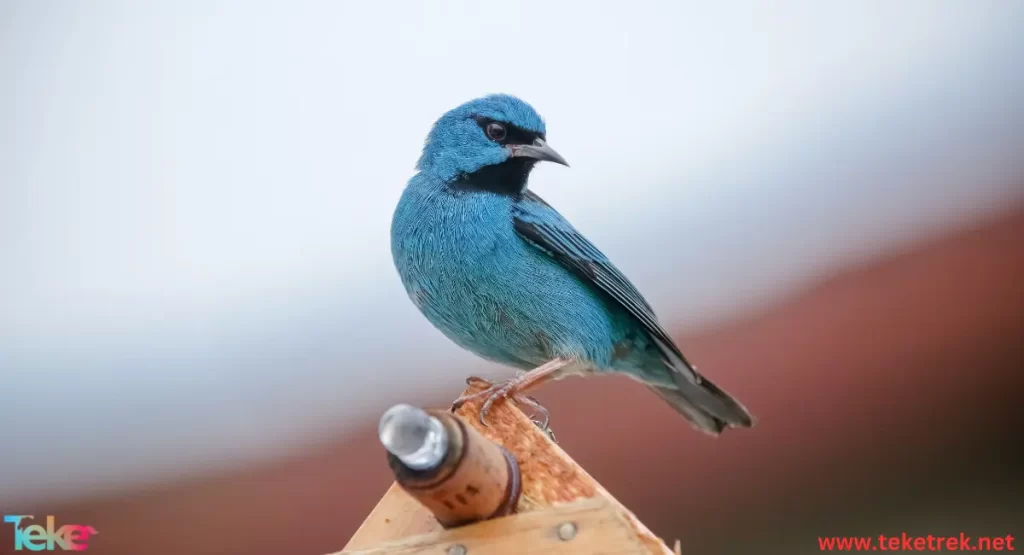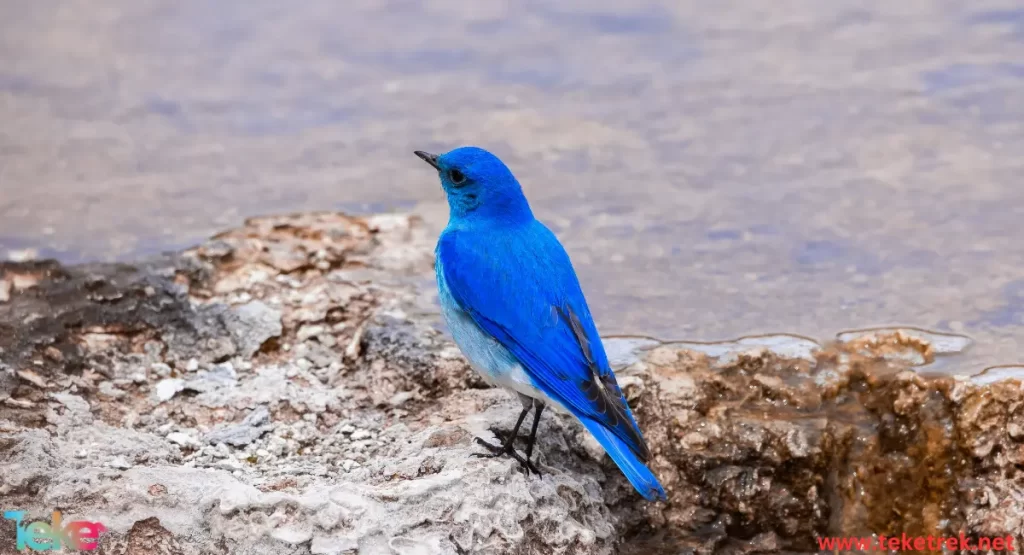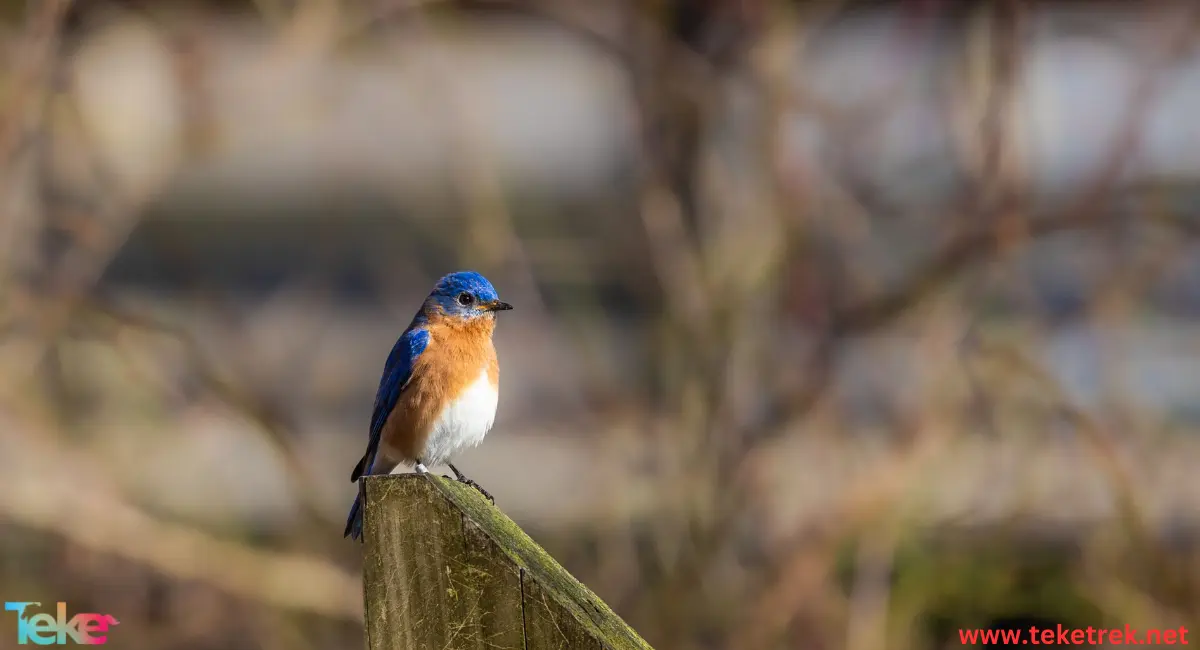The bluebird is one of the most beautiful birds that lives in many regions around the world. The bluebird is distinguished by the beauty of its bright feathers and the wonderful melodies of its voice. The blue bird is considered a source of inspiration for many poets and writers, and it is also a symbol of peace and freedom.
The bluebird is distinguished by its great ability to adapt to its surrounding environment, as it can live in various types of environments, from dense forests to urban parks. It also feeds on a variety of insects and seeds, making it an essential part of the ecosystem.
In some cultures, seeing it is a sign of the coming of new opportunities and the beginning of a new life. Follow this article from teketrek with us to learn more about this interesting creature.

About the bluebird
The bluebird is a medium-sized bird that feeds on insects and animal waste. It belongs to the passerine genus of the thrush family. These birds are one of the few songbird genera that live in both the Americas.
The bluebird is a member of the vertebrate phylum, class Aves.
Locations of the blue sparrow
The bluebird lives in meadows, plains, and forests, in addition to being found in open areas with widespread and distributed trees. It can also be found in gardens, parks, orchards, and squares, due to the lack of natural habitats and increased competition for food sources.
The blue bird characteristics
The bluebird has a blue back with dark color on the wings, a reddish-brown chest, and a white belly.
Females have a grey-covered body, with blue-tinged wings and an orange breast.
The bluebird is considered a large bird.
The bluebird has a round head and a slender body, in addition to a short, black beak.
The bluebird can reach a length of up to 6.3-8.3 inches, and a weight of 0.9-1.2 ounces, with females being slightly smaller than males.
The types of bluebird
There are 3 types of bluebird:
Western bluebird
Eastern bluebird
And Blue Mountain
They are sometimes confused and can be distinguished by the following:
The male western bluebird has a blue throat and the female has a gray throat.
The eastern bluebird has an orange throat
There is no orange color anywhere on the mountain blue’s body.
The blue sparro w diet
The bluebird’s diet depends on plants and animals, as it is characterized by a diverse diet. Its diet is based on grasshoppers, crickets, and various beetles in the hot summer seasons, and on berries, blueberries, and honeysuckle during the fall and winter seasons.
Mating stages of the bluebird
The eastern bluebird’s mating times range from February to September, and it produces two young birds each mating season.
The female bluebird lays about 3-7 bluish eggs that hatch after 13 to 16 days.
The female takes care of her young during the incubation period of the eggs, and provides them with food while they are in the nest (from 15 to 20 days).
Once the eggs hatch, the chicks are helpless.
The bluebird reaches sexual maturity when it reaches one year of ag
How long does a bluebird live?
The eastern bluebird can survive up to 6 years in the wild, and up to 10 years when in captivity.
What is the importance of the bluebird to the environment and ecosystem?
The bluebird plays an important role in the ecosystem and the environment in general, for several reasons:
1. Seed dispersal: The blue bird plays an important role in transporting plant seeds from one place to another, as it feeds on fruits and transports their seeds to different places, which contributes to the spread and renewal of plants in different regions.
2. Pest control: The bluebird feeds on insects, worms, and larvae, and this contributes to regulating the number of harmful organisms and maintaining the balance of the ecosystem.
3. Its role in the food chain: The blue bird is considered part of the food chain in nature, as it feeds on some insects, which in turn feed on certain plants. This balance in the food chain contributes to environmental stability.
4. Resource distribution: The presence of the bluebird contributes to the appropriate distribution of resources, as it helps prevent increased accumulation of organic materials and encourages the recycling of natural resources
In addition, the presence of beautiful birdsong is part of the beauty of nature, and contributes to creating a comfortable and welcoming environment for humans and other animals.
How can the bluebird be preserved in its environment?
There are some ways in which the bluebird can be preserved in its environment:
1. Protecting natural habitats: This can be achieved by preserving forests, meadows and other natural areas where the blue sparrow lives.
Harmful human interventions such as industrialization, pollution and habitat destruction must be reduced.
2. Providing food resources: The environment of blue birds can be improved by providing them with food resources, such as planting plants that provide them with food and water.
3. Reducing the use of chemical pesticides: The use of chemical pesticides should be reduced in areas where the blue sparrow lives, as these substances can be harmful to birds and affect their health.
4. Awareness and education: Society must be made aware of the importance of protecting birds and their environment, and encouraging sustainable actions that contribute to preserving biological diversity.
5. Supporting nature protection programs: Organizations and entities working to protect wildlife and birds can be supported, and contribute to programs to rehabilitate and protect birds.
By following these measures and adopting sustainable behaviors, we can all contribute to preserving and protecting the bluebird and maintaining the balance of the environment.

Frequently asked questions about the bluebird:
There are many frequently asked questions about this beautiful creature:
What is the blue bird name ?
The western bluebird is called Sialia mexicana in English.
Is the sparrow migratory?
Limited migration occurs in all areas.
What does blue birds mean?
Bird droppings are the droppings and remains of seabirds after they die.
In short, the bluebird is a beautiful and important bird in the ecosystem, so we must all work together to protect it and preserve its natural habitat.
Through awareness, education and practical action to conserve our environment, we can preserve the diversity of wildlife and preserve the beauty of this natural world. Let us work together to protect the bluebird and all nature’s creatures, for a better and more sustainable world for future generations.





